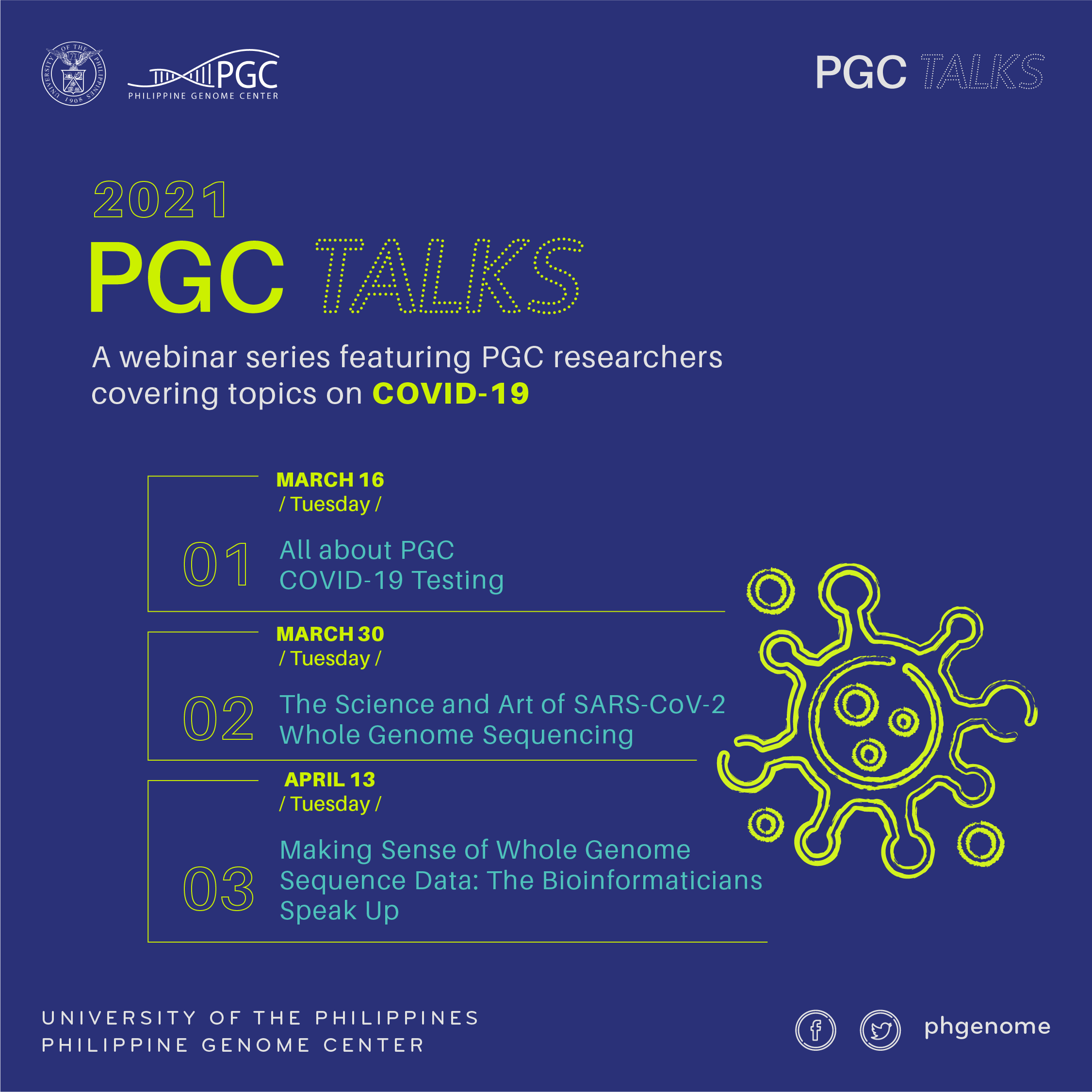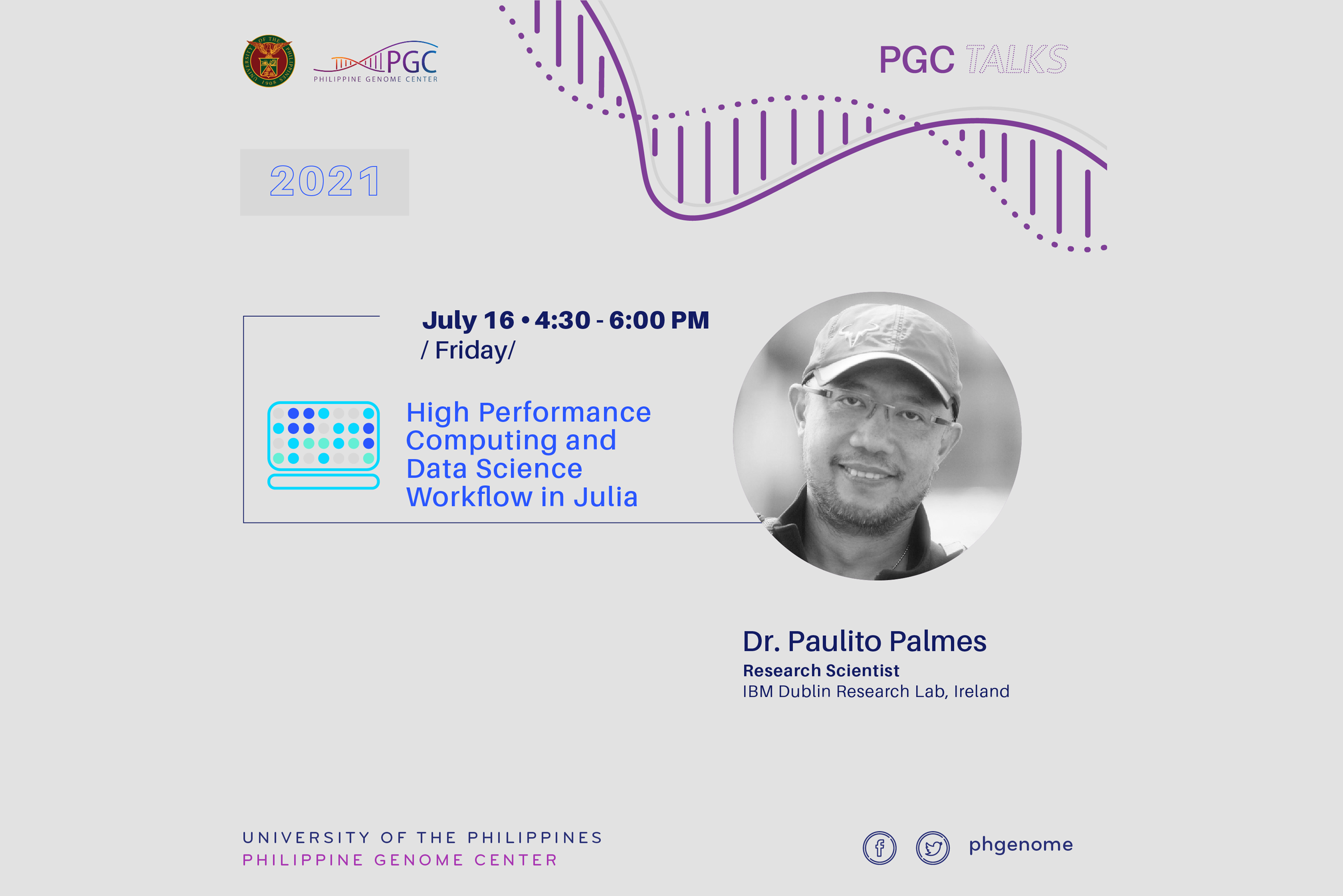HPC and Data Science Workflow in Julia #PGCTalks Date: July 16, 2021, Friday, 4:30-6:00pm This webinar is open to the public and registration is free. Abstract Julia is specifically designed from the start of its conception as a language for high-performance computation but at the same time highly interactive. To achieve this, Julia is one […]

#PGCTalks to feature topics on COVID-19 testing, sequencing, and bioinformatics analysis
#PGCTalks is back! The Philippine Genome Center is hosting mini webinar series #PGCTalks featuring various PGC experts and will cover topics on DNA sequencing, bioinformatics analysis, and testing related to COVID-19.

Genomic Studies for Otitis Media
Previously within an indigenous Filipino community with a ~50% prevalence of otitis media, we identified an A2ML1 mutation that confers a high risk of otitis media susceptibility and influences the relative abundance of specific bacterial taxa within the middle ear.

Cataloging planetary biodiversity
The Centre for Biodiversity Genomics (CBG) is a research organization dedicated to furthering our understanding of the world’s fauna and flora. Through a variety of approaches, researchers at the institute are discovering, cataloging, and describing biodiversity. DNA barcoding, an innovative technique developed at CBG, utilizes DNA sequencing technology for species identification.

A tale of sex: gene sharing between microbial species, genomes and microbiomes
Horizontal gene transfer (HGT) is an important evolutionary process that allows the spread of innovations between distantly related organisms. In this webinar, I will present recent findings on the process, driving factors and impacts of HGT in light of recent developments in next-generation sequencing approaches. I will discuss examples of HGT within species, between species and between microbial communities, and how these gene exchange networks drive the genetic and phenotypic diversity of microbes in nature and clinical settings

Transcription Factor Assisted Loading and Enhancer Dynamics Dictate the Hepatic Fasting Response
Fasting elicits transcriptional programs in hepatocytes leading to glucose and ketone production. This transcriptional program is regulated by many transcription factors (TFs). To understands how this complex network regulates the metabolic response to fasting we aimed at isolating the enhancers and TFs dictating it. Measuring chromatin accessibility revealed that fasting massively reorganizes liver chromatin, exposing numerous fasting-induced enhancers.

Systems Biology to Overcome TRAIL Resistance in Cancer Treatment
Over the last decade, our research team has investigated the dynamic responses and global properties of living cells using systems biology approaches. More specifically, we have developed computational models and statistical techniques to interpret instructive cell signaling and high-throughput transcriptome-wide behaviors of immune, cancer, and embryonic development cells.

A Convergent, Multidisciplinary Approach Towards Developing Microphysiological Systems: Tissues-on-Chips for Pharmacological Safety and Efficacy Testing
Advances in basic and preclinical science continue to fuel the drug discovery pipeline, however only a small fraction of compounds meet criteria for approval by the FDA.

SBML (the Systems Biology Markup Language) and related resources for computational systems biology
Computational modeling allows biologists to create formal models of cellular phenomena that can be simulated, analyzed and compared to experimental data. Biologists today have at their disposal a wide range of software tools for their modeling efforts. The wealth of resources is a boon to researchers, but it also presents interoperability problems.

Garuda Platform – Re-imagining connectivity in medicine
With the explosion of data in different dimensions of drug discovery, biomedicine and healthcare, a key challenge is the ability to connect the disparate data sources, discover the right analytics tools for a specific analysis and navigate through inter-operable analytics to provide executable insights.

